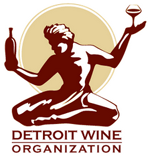If you’ve been a reader of the 60 Second Wine Course for awhile, you know that wine naming is a pretty standardized process, usually enforced by federal law. So how is it that a label like “Super Tuscan” came into existence, in tradition-steeped Italy of all places? Like all great movements, Super Tuscans, were born of revolution.
Tuscany is a region in central Italy which is responsible for producing some of the country’s most famous wine — Chianti. For hundreds of years, Italian law mandated that wines bearing the appellation “Chianti” must be produced by adhering to very strict methods and standards. For example, Sangiovese had to be the dominant grape used, although it could not be used exclusively. It had to be blended with lesser red grapes like Canaiolo and Mammolo or the white grapes Malvasia and Trebbiano.
In the 1980s, a few Italian winemakers began experimenting with grape varieties and methods outside of the regulations, blending their Sangiovese-based wines with foreign varietals like Cabernet Sauvignon and Merlot, for example, or aging their wines in French oak.
“Heresy!” declared the Italian Regulatory Council which refused to allow these wines to be called Chianti and relegated them to the designation “Vino da Tavola” (Table Wine), a tag which at that time signified a cheap, inferior product. Savvy wine drinkers took notice though, and snatched up these big, bold wines which were often had a distinct Tuscan style, but with some unique characteristics. Super Tuscans were soon winning wine competitions and international acclaim, often surpassing “approved” Tuscan wines in quality and price.
A generation later, Italian wine-labeling laws are more flexible. The Chianti designation, for example, requires at least 80% Sangiovese which can be blended with any other red varietal. Ironically, these changes were made at least partially in an effort to encourage Super Tuscan winemakers to market their wines using the Chianti designation.
Some producers of high quality Super Tuscans include Antinori, Castello di Banfi, Castello di Rampolla, Tenuta San Guido (maker of Sassicaia, the world’s first Super Tuscan) and Tenuta Sette Ponti. Super Tuscan can also equal “super big price tag,” but good bottles can be had for as little as $30. Since “Super Tuscan” is a nickname more than an official designation, you normally will not see this on a wine bottle. A couple hints found on the label can guide your search for a wine falling in this category. First, look for the word “Toscana” (Tuscany) on the label. The wine should also have a high percentage of Sangiovese usually with some other red varietal(s) blended in. And as always, when in doubt, seek guidance from your knowledgeable local wine retailer.
————-
Mark your calendars
We know it’s a little odd to have our June Wine Down Wednesday on a Tuesday, but given that our host is the newly relaunched Atwater Block Brewery near downtown Detroit, we didn’t want to compete with the annual Detroit-Windsor fireworks slated for June 29!This tasting will be well worth the schedule-juggling. We’ll sample wines from the fourth largest grape-growing state in the nation — Michigan. Our state’s wine production is growing at a rapid speed and quality is increasing just as quickly. Watch your email for more event details and ticket-purchase information. Good news for restaurant-going wine lovers
Effective May 20, Governor Granholm signed the “Merlot to Go” bill that enables customers to “doggie bag” partially consumed bottles of wine, if the bottle is recorked and transported home out of the reach of the driver. Under the new law, customers must purchase a meal along with the bottle of wine (the Michigan Restaurant Association defines a meal as any food purchased on premise, even if it’s just an appetizer).
Jevon is a board member


Leave A Comment